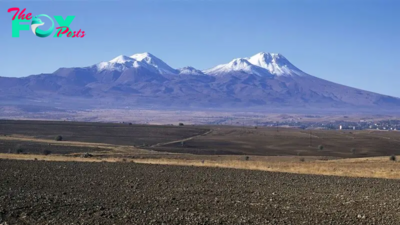Science
'Every volcano has its own personality': Mystery Mount Adams earthquake surge under investigation
Scientists are trying to establish what caused an unusual spike in earthquakes at the Mount Adams volcano in Washington state by installing multiple temporary seismic monitoring stations at the site.
In September, six small earthquakes were recorded at the "high threat" volcano. Normally, it only experiences one earthquake every two to three years, according to the U.S. Geological Survey (USGS) Cascades Volcano Observatory (CVO).
"We are now working to gather more data to assess if this is really something unusual or just a volcano talking to us a bit more than it normally does," Jon Major, the CVO scientist-in-charge, told Live Science in an email.
"Our volcanoes chatter all the time," he said, adding that the nearby Mount St. Helens and Mount Rainier often experience 10 to 20 earthquakes per month. "Some volcanoes, like St. Helens, Rainier, and Mount Hood undergo episodes of increased earthquake frequency where we see bursts of many earthquakes, which may last for days to weeks," he said. "That is all part and parcel of background activity at our Cascades volcanoes. So what we are seeing at Mount Adams is very far from unusual for the Cascades — but different for Mount Adams."
At 12,277 feet (3,742 meters) high and 18 miles (29 kilometers) wide, Mount Adams is the largest active volcano in Washington, surpassing Mount Rainier — the state's highest peak — by volume.
Related: The sea 'began to boil': Freak volcanic eruption of Santorini 1,300 years ago indicates huge blasts can occur during time of quiet
The increase in earthquake activity, including another magnitude 0.9 quake on Sunday (Oct. 6), does not indicate an eruption will take place. The earthquakes were very small, ranging from magnitudes 0.9 to 2. "Had one been standing at or near Mount Adams one would not have felt these earthquakes," Major said. The volcano last erupted around 4,000 years ago, but this relatively long period doesn't mean that an eruption is due, he added. "Every volcano has its own personality and they do not erupt on any particular cycles," he said. "Some may erupt and then be active intermittently for decades or centuries, then go back to a state of dormancy for centuries to millennia."
-

 Science1d ago
Science1d agoInside Capitol Hill’s Latest UFO Hearings
-

 Science1d ago
Science1d agoYou Won’t Want to Miss the Leonid Meteor Shower. Here’s How and When You Can See It
-

 Science2d ago
Science2d agoHere’s What Trump’s Win Means for NASA
-

 Science5d ago
Science5d agoWhy Risky Wildfire Zones Have Been Increasing Around the World
-

 Science5d ago
Science5d agoIt’s Time to Redefine What a Megafire Is in the Climate Change Era
-

 Science1w ago
Science1w ago4 Astronauts Return to Earth After Being Delayed by Boeing’s Capsule Trouble and Hurricane Milton
-

 Science1w ago
Science1w agoThe Elegance and Awkwardness of NASA’s New Moon Suit, Designed by Axiom and Prada
-

 Science1w ago
Science1w agoSpaceX Launches Its Mega Starship Rocket. This Time, Mechanical Arms Catch It at Landing



























